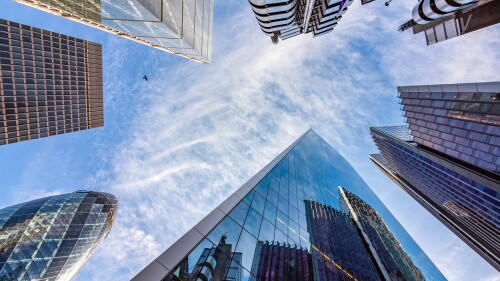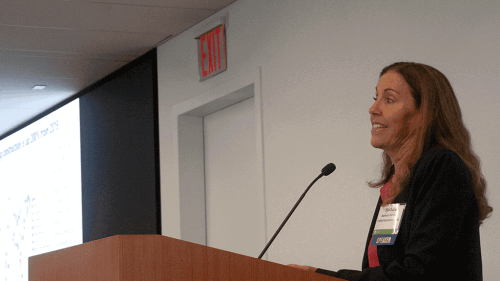Office
As buildings become more efficient and run on “cleaner” energy sources, the industry’s attention will need to include embodied carbon—emissions associated with the manufacturing and transportation of building materials, as well as the construction, maintenance and disposal of buildings.
Speakers mixed good news and uncertainty at the “ULI New York: Real Estate Outlook 2025" event, held January 22, 2025, at the Stern School of Business at New York University in Manhattan by ULI New York in partnership with NYU Stern | Chen Institute.
In the heart of London’s Covent Garden neighborhood, a complex of five Victorian-era structures—previously housing a seed merchant company, a brass and iron foundry, and a Nonconformist chapel, among other uses—have been restored and adapted into a single, cohesive office building with ground-floor retail and dining space. The three-year restoration preserved the property’s industrial heritage and provides flexibility to meet the needs of today’s workforce.
In late September 2019, 7,300 commuter students were settling into their routines at the University of Southern Maine (USM) in Portland, where the academic year had just begun. Then, at the end of the month, a fire main broke beneath the repurposed industrial building serving as the student center, flooding it with six inches of mud. City officials declared the building uninhabitable, leaving the school without a student center.
Canada’s real estate market is in the midst of a pivotal shift as the Bank of Canada (BoC) rolls back what has been “higher for longer” interest rates. Yet despite welcome relief on financing costs, real estate leaders are still moving somewhat cautiously amid uncertainty and fluid market dynamics.
The U.S. economy did very well in 2024, said Barbara Denham, lead economist for Oxford Economics, and the forecast for the coming year is more of the same—both in New York City and across North America. However, in presenting Oxford’s favorable economic forecast for 2025 at a ULI New York event last month, Denham also noted many caveats ahead of the incoming U.S. administration.
After a quiet first half of 2024, CMBS originations increased 59 percent in Q3 on a year-over-year basis, according to the Mortgage Bankers Association’s Quarterly Survey.
The outlook for the European real estate market is cautiously optimistic despite growing geopolitical uncertainty and concerns about economic growth, with London, Madrid, and Paris emerging as the standout performers, according to a new report by PwC and the Institute.
Released during the Institute’s 2024 Fall Meeting in Las Vegas, Emerging Trends in Real Estate® North America predicts Dallas-Fort Worth, Miami as leaders in 2025
According to the second annual C Change Survey, 93 percent of respondents report incorporating transition risks into their real estate investment decisions, indicating the industry’s growing awareness and commitment to integrate climate-related financial risks into decision-making processes.










